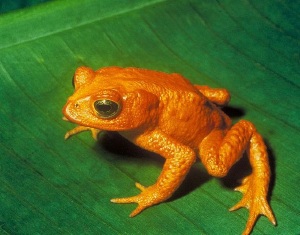 Over a thousand new species have been discovered in the Greater Mekong Region of Southeast Asia in just the last decade, according to a new report launched by WWF.
Over a thousand new species have been discovered in the Greater Mekong Region of Southeast Asia in just the last decade, according to a new report launched by WWF.
Discoveries include 519 plants, 279 fish, 88 frogs, 88 spiders, 46 lizards, 22 snakes, 15 mammals, 4 birds, 4 turtles, 2 salamanders and a toad. The region comprises the six countries through which the Mekong River flows including Cambodia, Lao PDR, Myanmar, Thailand, Vietnam and the southern Chinese province of Yunnan. It is estimated thousands of new invertebrate species were also discovered during this period, further highlighting the region’s immense biodiversity.
Among the 1,068 species newly identified by science, between 1997 and 2007, were the world’s largest huntsman spider, with a leg span of 30 centimetres, and the startlingly hot pink coloured cyanide-producing “dragon millipede”.
While most species were discovered in the largely unexplored jungles and wetlands, some were first found in the most surprising places. The Laotian rock rat, for example, thought to be extinct 11 million years ago, was first encountered by scientists in a local food market, while the Siamese Peninsula pitviper was found slithering through the rafters of a restaurant in Khao Yai National Park in Thailand.
“This region is like what I read about as a child in the stories of Charles Darwin,” said Dr Thomas Ziegler, Curator at the Cologne Zoo. “It is a great feeling being in an unexplored area and to document its biodiversity for the first time… both enigmatic and beautiful,” he said.
“It doesn’t get any better than this,” said Stuart Chapman, Director of WWF’s Greater Mekong Programme. “We thought discoveries of this scale were confined to the history books. This reaffirms the Greater Mekong’s place on the world map of conservation priorities.”




















New speciies DISCOVERED, but does that mean NEWLY EVOLVED/CREATED? Does this help offset the species going extinct or does it just mean we didn’t know about these species before?
WE didn’t know about these species. So, they are now cataloged and known to science.
That’s amazing! And it’s not only insects, but mammals and birds and lizards – all sorts of stuff! That’s what is fabulous to me 🙂